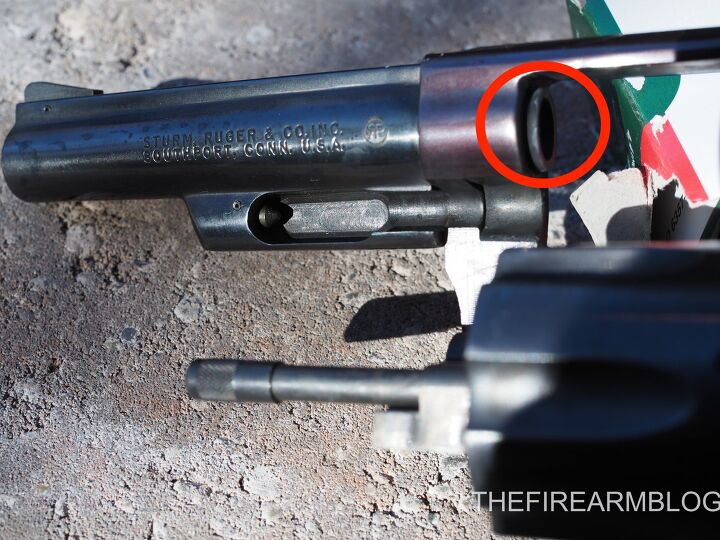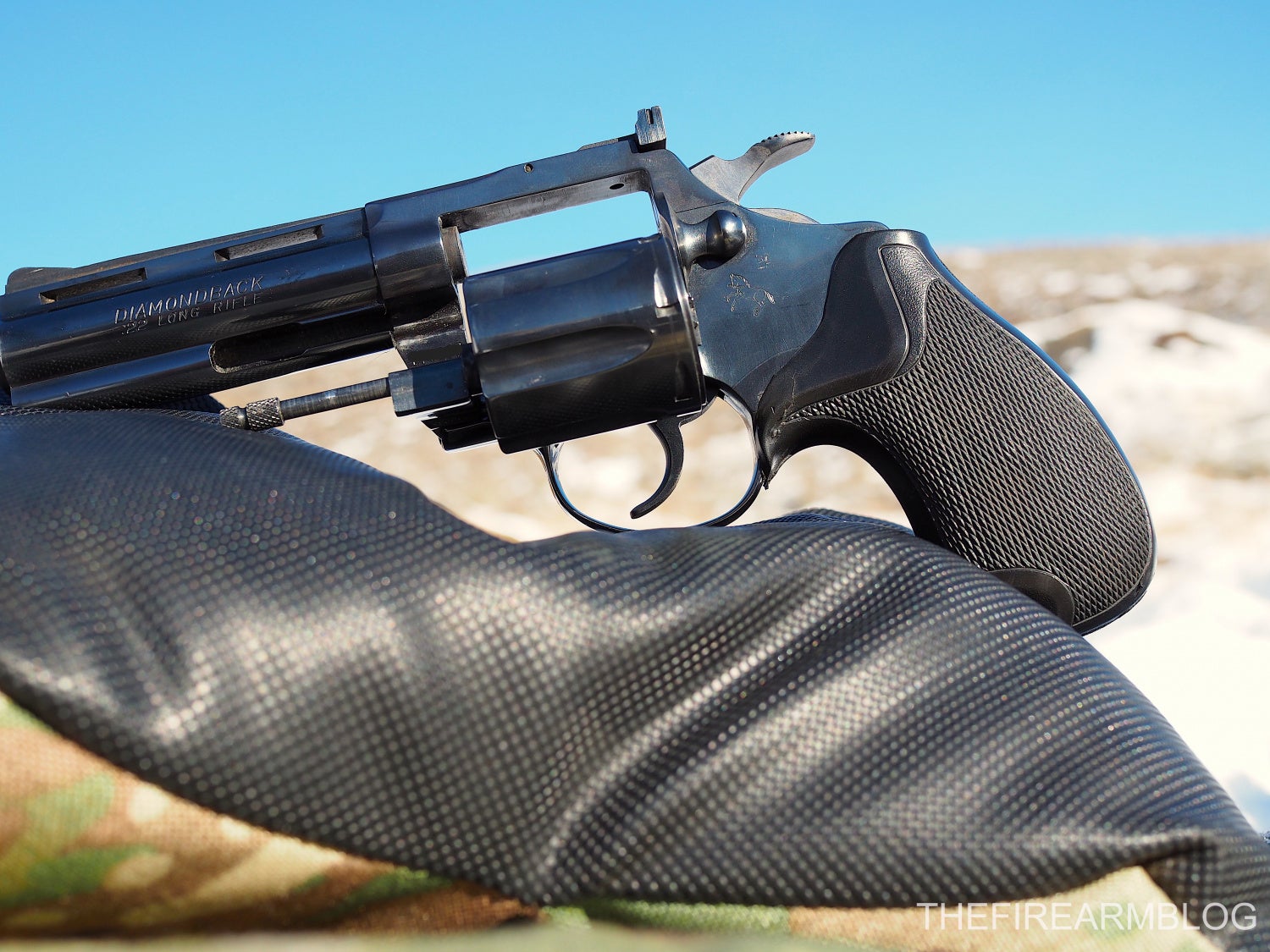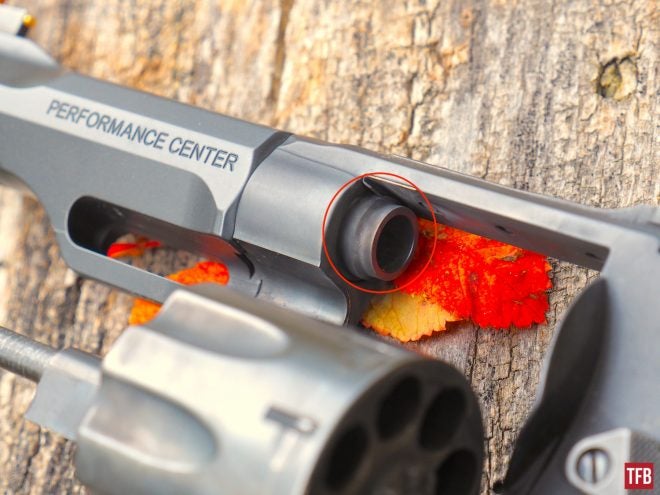The forcing cone of a revolver barrel bears a lot of stress. They’re not only the first part of the barrel to engage with the bullet coming out of the cylinder, but they’re also largely exposed to all the heat, flame, and gas cutting from the cylinder gap, however infinitesimally small. This may not be a big deal in a Ruger Wrangler, but it matters a lot more in something like a S&W 629PD, Ruger Super Blackhawk, or S&W 460XVR.

Ruger revolvers usually have a beefy forcing cone
What is a “forcing cone”?
Both shotguns and revolvers have forcing cones. While they look very different in a shotgun versus a revolver, they both serve the same general purpose: A forcing cone helps smoothly transition a fired projectile into the barrel. In a revolver, the forcing cone is usually an exposed section of the barrel that extends into the frame, and is directly in front of the cylinder. Old-fashioned revolvers had pre-set 40-70 degree bevels, but modern revolvers have more gradual forcing cones that should help the bullet make the jump into the barrel with a minimum of projectile shaving and velocity loss.

Why have forcing cones in the first place?
Many revolvers have forcing cones, but not all. The forcing cone allows for clearance between cylinder and frame, but a tighter fit at the point where the cylinder chambers line up with the barrel. This tight fit reduces loss of velocity, as well as a reduction in the amount of flash and gas cutting that would otherwise hit the frame. The best possible solution to this problem is “gas sealed” revolvers, but these are not all that common nowadays.
Forcing cones are also a major plus when it comes to accuracy. If you have an inaccurate revolver, one of the first places to take a look at is the forcing cone. A good gunsmith can sometimes get your wheelgun shooting straight by giving this area a little TLC.
Forcing cone thickness and profiles vary from model to model and manufacturer to manufacturer. If you are a high-volume shooter, be sure to pick a revolver with a forcing cone thick enough or made of good enough material to handle the high volume of rounds, and therefore gas cutting and pressure that you are putting on this critical piece of barrel.

Forcing Cones can fail
Due to their exposed nature, as well as sometimes having less thickness than the rest of the barrel, forcing cones can fail. While forcing cone failure is rare, it would behoove you to carefully inspect the forcing cone on your revolvers, especially prospective used guns you might want to buy. Evidence of flame cutting, pits, or, god forbid, cracks in the forcing cone indicate a revolver that will not only lose velocity and accuracy but will be downright dangerous to shoot. If you are a high round count shooter, you may start to experience failure on this critical part pretty soon with magnum cartridges. What you might think is the result of substandard ammunition might just be an early sign of forcing cone failure.
We hope that this quick look at forcing cones has been helpful to those new to the term. Until next time, keep on wheelgunning!
 Your Privacy Choices
Your Privacy Choices
